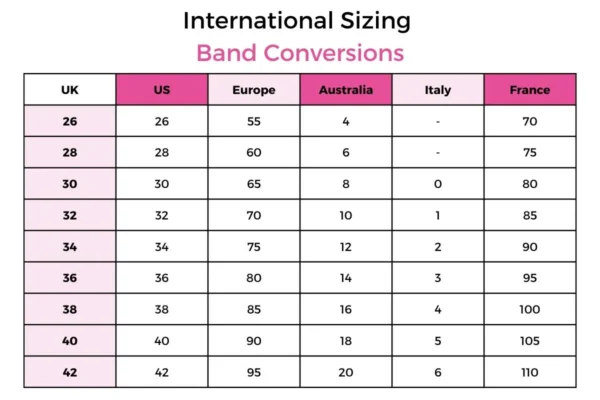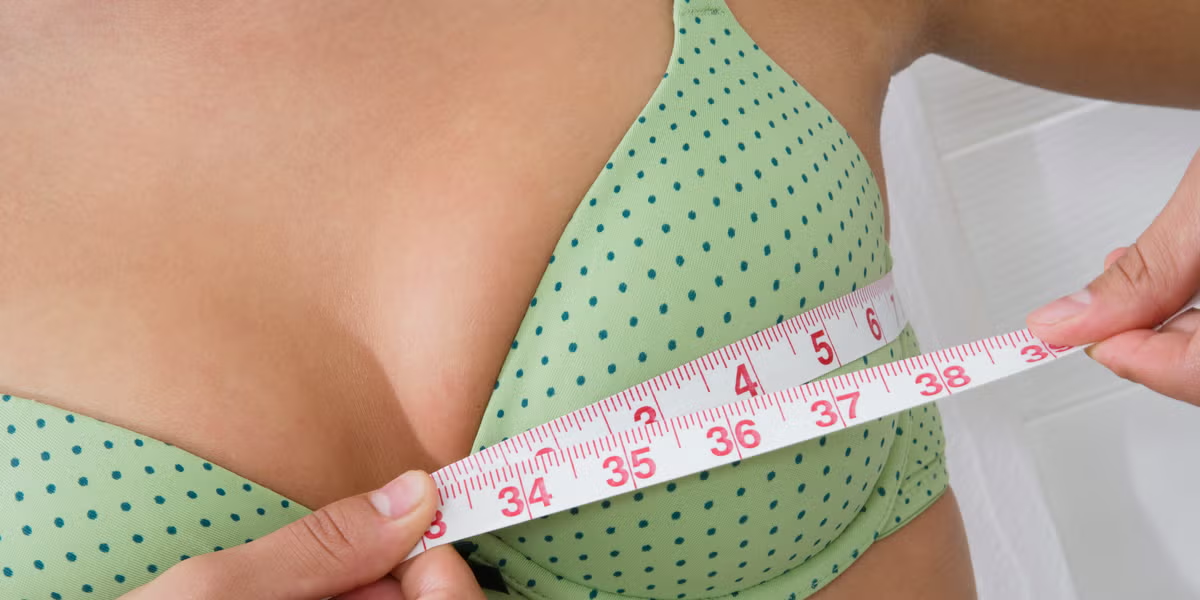Why Accurate Bra Measurement is Essential
Contents
Finding the right bra is about more than just choosing a pretty design—it’s about getting the perfect fit. Wearing the wrong bra size can lead to discomfort, poor posture, and even back pain. Unfortunately, many women wear the wrong size without realizing it. But once you know how to properly measure for a bra, you can ensure you’re always wearing the right size for your body.
In this comprehensive guide, we’ll walk you through the steps to get your correct bra measurements. From measuring your band and bust size to understanding the different cup sizes, we’ll cover everything you need to know to help you find your perfect fit.
Understanding Bra Measurement: What Does It Mean?
Before we jump into the details of how to measure for a bra, let’s first break down what bra measurement means.
A bra size typically consists of two main parts:
- Band size: This is the measurement around your ribcage, just beneath your bust.
- Cup size: This refers to the volume of your bust, determined by the difference between your bust measurement and your underbust measurement.
Together, these two measurements create your bra size. For example, a 34B means a 34-inch band with a B cup size. It’s important to note that your bra size may change over time due to various factors such as weight changes, pregnancy, and age.

Step-by-Step Guide to Bra Measurement
Now that you understand the basics, let’s walk through the process of measuring yourself for a bra. To get the most accurate results, you’ll need a soft measuring tape, a mirror, and a well-fitting bra to wear while measuring.
Step 1: Measure Your Band Size (Underbust Measurement)
Your band size is the number portion of your bra size (for example, 34 in 34B). This measurement is taken around your ribcage, just beneath your bust.
How to Measure Your Band Size:
- Stand in front of a mirror and wrap the measuring tape around your ribcage, just under your bust.
- Make sure the tape is snug but not tight, and keep it parallel to the ground all the way around your torso.
- Exhale to get the most accurate measurement.
- Take the measurement to the nearest whole number. This is your underbust measurement.
If your underbust measurement is an odd number, round it up to the next even number. For example, if you measure 30 inches, round it up to 32 inches.
Step 2: Measure Your Bust Size (Fullest Part of Your Bust)
Next, measure the fullest part of your bust to determine your cup size.
How to Measure Your Bust Size:
- Stand up straight with your arms relaxed at your sides.
- Wrap the measuring tape around the fullest part of your bust, making sure it’s not too tight.
- Ensure that the tape runs over the top of your bust and under your armpits, and that it remains level across your back.
- Take the measurement while keeping the tape comfortably snug but not tight.
Make sure to take the measurement without pushing the tape down into your skin or over-tightening it.
Step 3: Calculate Your Cup Size
Now that you have both your band size and bust measurement, you can calculate your cup size. To do this, subtract your band size from your bust measurement.
How to Calculate Your Cup Size:
- Subtract your band size (underbust measurement) from your bust measurement.
- The difference between these two numbers will determine your cup size. For example:
- 1-inch difference = A cup
- 2-inch difference = B cup
- 3-inch difference = C cup
- 4-inch difference = D cup
For example, if your bust measurement is 36 inches and your band size is 34 inches, the difference is 2 inches. Therefore, your cup size is B, and your bra size would be 34B.
Common Mistakes to Avoid When Taking Bra Measurements
While measuring for a bra may seem simple, there are several common mistakes people make. Here are a few things to watch out for:
1. Not Measuring in the Right Location
When measuring for your band size, ensure you’re measuring just beneath your bust. Measuring too high or too low can give you an inaccurate result.
2. Wearing the Wrong Bra During Measurements
To get accurate bra measurements, wear a well-fitting, non-padded bra. A padded or push-up bra can distort your measurements and give you an incorrect size.
3. Not Measuring in the Correct Position
It’s important to stand straight with your arms relaxed at your sides. Bending or slouching can affect your measurements.
4. Measuring Over Clothing
Always measure directly on your skin or over a very thin layer of clothing. Measuring over bulky fabrics can lead to inaccurate results.
How Often Should You Measure for a Bra?
Your bra measurement isn’t static—it can change over time due to factors like weight fluctuations, pregnancy, hormonal changes, and even aging. It’s a good idea to remeasure yourself every 6-12 months to ensure your size hasn’t changed. Additionally, if you notice that your bras are no longer fitting well or providing the support you need, it’s time to remeasure and reassess your size.
What to Do After Getting Your Bra Measurements
Once you’ve measured yourself and calculated your band size and cup size, you can confidently shop for bras that will fit perfectly. However, remember that bra sizing can vary slightly between brands, so it’s always a good idea to try bras on before purchasing or check the brand’s sizing guide.
Tips for Choosing the Right Bra:
- Comfort: The band should sit snugly around your ribcage without digging into your skin. The cups should fully contain your breasts without spilling over.
- Style: Different bra styles offer different levels of support, so choose one that fits your needs. For example, a sports bra is perfect for physical activity, while a t-shirt bra offers a smooth, seamless look for daily wear.
- Fabric: Look for fabrics that suit your lifestyle, such as cotton for breathability or satin for a more luxurious feel.
The Importance of Proper Bra Measurement
Accurate bra measurements are the key to finding a bra that fits comfortably and provides the support you need. By following the steps outlined in this guide, you can easily determine your correct band and cup size and make more informed choices when shopping for bras.
Remember, wearing the right size is not only important for comfort but also for your overall health and posture. A well-fitting bra can make a world of difference in your confidence and comfort.
FAQ: Common Questions About Bra Measurement
Q1: How do I know if my bra fits correctly?
A correctly fitting bra should feel comfortable, stay in place, and provide support without digging into your skin. The band should stay level across your back, and the cups should fully contain your breasts.
Q2: Can my bra size change over time?
Yes, your bra measurements can change over time due to factors like weight fluctuations, pregnancy, and hormonal changes. It’s essential to measure yourself regularly to ensure you’re wearing the correct size.
Q3: Why does my bra size vary by brand?
Different bra brands have slightly different sizing systems, which is why it’s important to try on bras or check the brand’s sizing guide before purchasing.

